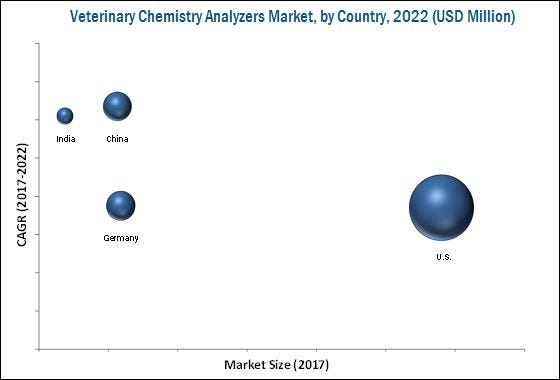The Global Veterinary Chemistry Analyzer Market is estimated to grow at a CAGR of 8.7%, during the forecast period, to reach $1,205.2 million.
Factors such as increase in animal population, growing pet adoption, rising demand for animal-derived food products, increasing incidence of zoonotic diseases, growing demand for pet insurance, rising animal health expenditure, and growth in the number of veterinary practitioners and their income levels in developed economies are driving the growth of the Global Veterinary Chemistry Analyzer market.
However, increasing pet care costs may hinder the growth of this market to a certain extent.
Download PDF (Veterinary Chemistry Analyzer): https://www.marketsandmarkets.com/pdfdownloadNew.asp?id=48798056
Veterinary Chemistry Analyzer Market segmentation:
· based on products
· based on application
· based on animal type,
· based on regions.
The Major Players Opearting in the Veterinary Chemistry Analyzer Market:
Amidst intense market competition, major players are continuously focusing on achieving higher market shares through new product launches, agreements, partnerships, acquisitions, and expansions.
Some of the prominent players in this Veterinary Chemistry Analyzer Market are IDEXX Laboratories, Inc. (U.S.), Abaxis, Inc. (U.S.), Heska Corporation (U.S.), Randox Laboratories Ltd. (U.K.), ARKRAY, Inc. (Japan), Eurolyser Diagnostica GmbH (Austria), Alfa Wassermann Inc. (U.S.), DiaSys Diagnostic Systems, USA, LLC (U.S.), Diconex SA (Argentina), Chengdu Seamaty Technology Co., Ltd.(China), Biochemical Systems International Srl (Italy), ELITechGroup (France), and URIT Medical Electronic Group Co. Ltd (China).
Geographical Detailed Analysis for Veterinary Chemistry Analyzer Market:
The Global Market is categorized into developed and emerging markets.
The emerging markets (including China, India, and Latin America) segment is expected to witness the highest growth rate during the forecast period.
Growth in this Veterinary Chemistry Analyzer Market can be attributed to the rising animal population, increasing demand for animal-derived food products, growing per capita animal health expenditure (especially in India, Latin America, and China), growing pet adoption, and rising awareness regarding animal health and welfare.
Read More in Detailed (Veterinary Chemistry Analyzer):

No comments:
Post a Comment